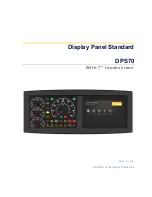
HYDROK – Safety
2.10.5 Fourth limit
[forces]
The forces acting on the workpiece from the outside.
Determination of these forces is explained in the fol-
lowing calculation approach.
In this regard it must be determined whether
1. the clamping force necessary for absorbing the ex-
ternal forces and torques, can be applied through
the clamping device.
2. the clamping device is damaged visibly or in a
manner that is not apparent through the external
forces.
The forces and moments acting on the clamping ele-
ment [clamping head] and ultimately on the clamping
device [chuck] are essentially
a) Machining forces and machining moments that
must be absorbed
b) The weight force of the workpiece itself,
c) Centrifugal forces due to the weight of the clamping
head
d) Tailstock forces
Principles for the
forces acting on the
workpiece from the
outside
NOTE!
For safe machining
2
, the following must apply
at all times:
1st principle
F
rad
≥ F
raderf
AND
2nd principle
Ft ≤ Ft
max
AND
3rd principle
F
c
≤ Fc
max
[relevant for turning jobs or axial drilling
operation]
AND
4th principle
Fq ≤ Fqmax
[relevant for radial drill operation]
AND
5th principle
Mq ≤ Mqmax
[relevant for radial drill operation]
2 With these principles it is assumed that the chuck is used for turning jobs or for axial or radial drill op-
eration on the workpiece. The possibility that the chuck can also be used for other machining tasks,
such as peripheral milling or plunge milling, is not fundamentally excluded. However, in this regard
the user must ensure that the forces and moments occurring in the process are compared with the
permissible equivalent values of a turning process or drilling process in order to verify the permissi-
bility of the application.
Order h49 7144.907-333
23
















































